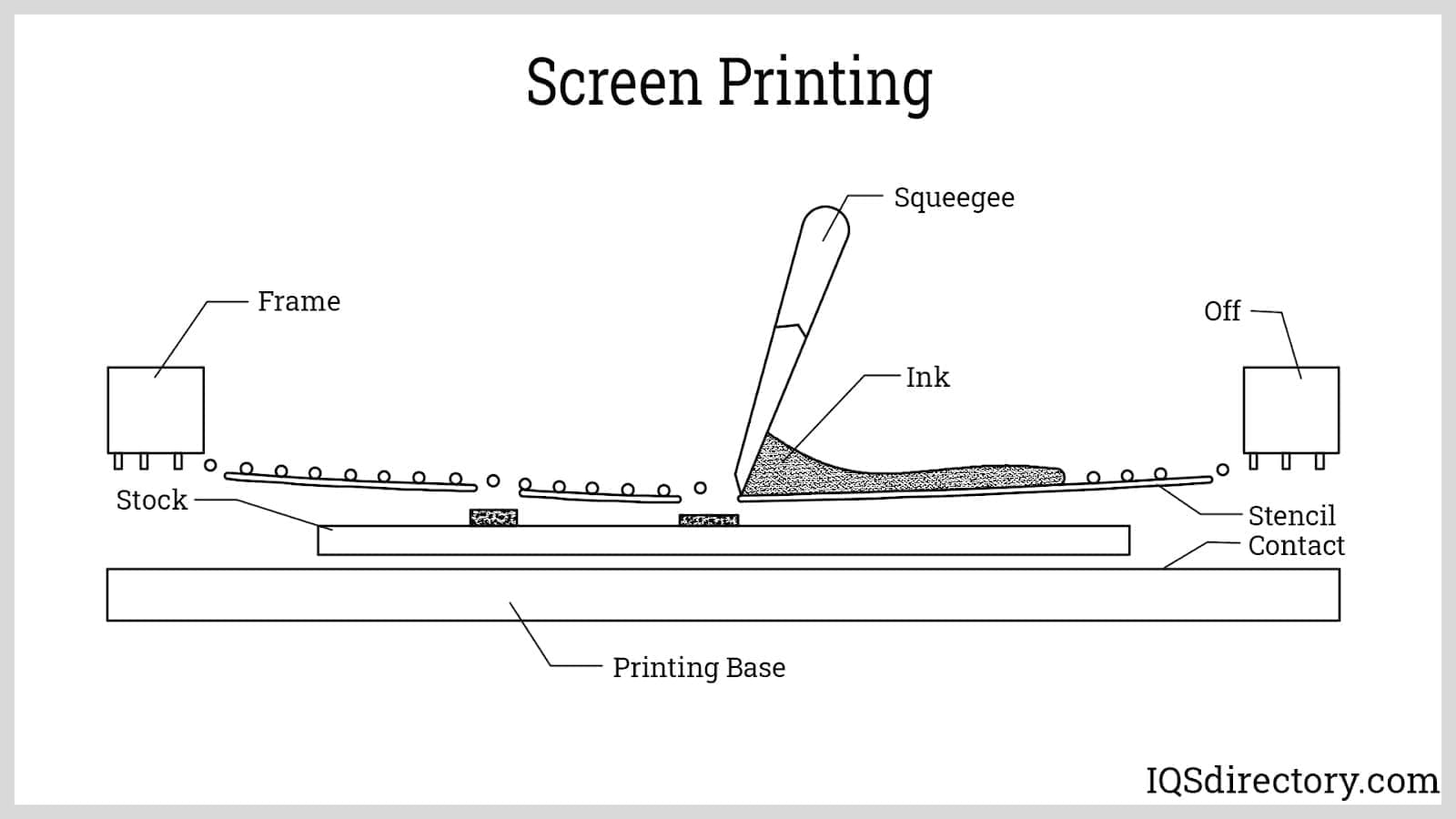How membrane switch supports durability and performance in healthcare
Wiki Article
All Regarding Membrane Switch Over: A Comprehensive Guide for Beginners
Membrane layer buttons are essential elements in modern electronic devices, using an one-of-a-kind interface for individual interaction - membrane switch. Their split building and construction, including overlays and conductive traces, provides functionality and longevity. Unlike typical mechanical switches, membrane layer buttons provide a streamlined style and customizable alternatives. Comprehending their key functions and benefits can change item layout. However, the ins and outs of their application and layout considerations warrant further explorationWhat Is a Membrane Switch over?
A membrane layer switch is a kind of electrical button that includes a versatile membrane layer layered over a published circuit card. This style enables a portable and sleek interface, typically utilized in numerous digital gadgets. Membrane layer switches are frequently found in consumer appliances, clinical equipment, and commercial equipment as a result of their durability and resistance to ecological factors.The building and construction commonly consists of multiple layers, such as graphic overlays and adhesive support, which offer tactile feedback and protect the circuitry below. The procedure of a membrane layer button is launched when pressure is related to the surface, finishing an electrical circuit.These buttons are valued for their adaptability, allowing custom-made layouts and published graphics that accommodate certain interface. Their inconspicuous nature decreases room needs, making them optimal for applications where typical buttons might not fit. On the whole, membrane buttons provide a visual and functional solution for modern digital devices.Secret Components of Membrane Switches
Membrane changes make up a number of key elements that add to their capability and efficiency. The top layer, recognized as the overlay, gives the user interface and is frequently printed with graphics or symbols. Below the overlay exists a spacer layer, which divides the conductive components and protects against unintended activation. The next essential part is the graphic layer, which boosts visual appeals and ensures the resilience of the design.Conductive traces, commonly made from materials like silver or carbon, are published on the circuit layer. When pressure is applied to the overlay, these traces enter call, finishing the circuit. Furthermore, a support layer offers structural assistance and can be made from products such as polyester or polycarbonate. With each other, these parts create a trustworthy, straightforward user interface appropriate for different applications, from home home appliances to industrial devices. Recognizing these aspects is important for anybody thinking about membrane switch modern technology.Exactly How Membrane Switches Over Work
Understanding just how membrane layer switches over function is important for appreciating their prevalent usage in various devices. A membrane layer switch runs through a collection of layers, including a graphic overlay, spacer, and a circuit layer. When pressure is related to the overlay, it presses the spacer layer, allowing the circuit layer to make get in touch with and complete an electric circuit. This activity sends a signal to the gadget, prompting a response, such as activating a light or turning on a function.Membrane changes can be developed with numerous attributes, consisting of responsive responses, backlighting, and personalized graphics, improving user communication. Their building and construction enables for a closed layout, protecting the interior elements from dust, wetness, and pollutants. This durability makes them ideal for diverse applications, from consumer electronic devices to commercial tools. Overall, the simplicity and performance of membrane layer switches contribute to their popularity in contemporary technology.Advantages of Membrane Layer Switches Over Mechanical Buttons
While mechanical buttons have actually long been a staple in numerous tools, membrane switches over deal unique benefits that make them increasingly appealing. One substantial advantage is their slim profile, permitting for more small styles and higher versatility in item development. Furthermore, membrane changes attribute an uniform surface area, which enhances visual allure and simplifies cleaning, making them suitable for environments where hygiene is critical.Another advantage is their resistance to dust and moisture. Unlike mechanical switches, which can be jeopardized by environmental factors, membrane layer buttons offer a sealed user interface that secures against impurities - membrane switch. In addition, membrane layer switches typically have a longer life-span because of fewer relocating parts, causing improved toughness and reliability.Cost-effectiveness is also a remarkable benefit, as membrane layer buttons can be produced wholesale with lower production expenses. These factors integrate to place membrane layer switches as a useful alternative to standard mechanical choices in different applicationsTypical Applications of Membrane Switches
Membrane buttons are widely utilized in numerous sectors, especially in customer electronics and industrial control board. In customer devices, they offer a streamlined, user-friendly interface, while in industrial setups, they boost sturdiness and capability. Understanding these applications highlights the flexibility and functionality of membrane layer buttons in modern technology.Consumer Electronics Tools
As customer electronic devices proceed to evolve, membrane switches have ended up being a prominent selection for a selection of tools due to their versatility and sleek design. These switches are typically discovered in mobile phones, tablets, and push-button controls, where area is restricted and aesthetics matter. Their low profile and customizable designs allow makers to create straightforward interfaces that enhance the overall customer experience. Furthermore, membrane switches are typically utilized in appliances such as microwaves and coffee machine, providing intuitive control alternatives while standing up to wetness and dirt. The resilience and reliability of membrane layer switches over make them appropriate for everyday consumer items, making sure durability and consistent efficiency. Generally, their integration in customer electronic devices reflects a mix of performance and modern design.Industrial Control Panels
The applications of membrane layer changes extend past consumer electronic devices, discovering significant usage in industrial control board. These buttons are favored for their longevity and resistance to extreme atmospheres, making them perfect for producing and process control setups. They offer a dependable user interface for operators to regulate machinery, display processes, and change setups. Membrane buttons can be customized to match particular functional requirements, including functions like backlighting and responsive feedback, improving customer experience. Their low-profile layout enables assimilation right into numerous tools, while their capacity to hold up against spills, dirt, and extreme temperature levels guarantees long life. On the whole, membrane layer switches add to efficient and secure procedure in industrial applications, demonstrating Continue their convenience and effectiveness in demanding settings.Considerations for Designing Membrane Switches Over
When designing membrane switches, choosing the appropriate products is vital to assure durability and performance. Furthermore, recognizing layer arrangement techniques can significantly impact the switch's efficiency and customer experience. These Web Site factors to consider play an important function in producing reliable and efficient membrane switch designs.
Material Selection Value
Product selection plays a necessary duty in the layout and capability of membrane layer buttons. The selected materials directly impact the switch's sturdiness, tactile reaction, and general aesthetic. Key factors to consider consist of the substratum, which need to supply structural honesty while permitting for flexibility, and the visuals overlay, which requires to be resistant to use and ecological factors. Conductive materials should ensure reputable electric performance, while adhesives need to supply solid bonding without endangering the switch's procedure. Additionally, compatibility with manufacturing procedures and end-user settings is important; products must endure varying temperatures, moisture degrees, and chemical exposure. Inevitably, appropriate product option not only improves the membrane layer button's efficiency however also adds to its long life and customer contentment, making it an essential facet of the layout procedure.
Layer Setup Techniques

Frequently Asked Inquiries
The Length Of Time Do Membrane Layer Changes Normally Last?
Membrane switches typically have a life expectancy of 1 to 5 million cycles, depending on use and ecological conditions. Aspects such as design high quality and operating regularity considerably influence their durability and total performance longevity.
Can Membrane Layer Switches Over Be Custom-made for Certain Styles?
Membrane layer switches can certainly be customized to fit details layouts, permitting diverse shapes, colors, and performances. This convenience makes it possible see here for manufacturers to tailor these switches to fulfill unique aesthetic and operational demands successfully.What Materials Are Utilized in Membrane Layer Change Building?
Membrane switches are usually constructed making use of materials such as polyester, polycarbonate, and adhesive layers. These products give longevity, resistance, and versatility to ecological variables, guaranteeing the buttons operate effectively in different applications and problems.
Are Membrane Layer Switches Water Resistant or Resistant to Wetness?
Membrane layer buttons can be made to be moisture-resistant, utilizing specialized finishings and products. However, their water resistant capacities depend upon building and construction quality and details applications, making it necessary to analyze demands for optimal performance in various atmospheres.Just How Are Membrane Layer Switches Over Repaired if Damaged?
Repairing broken membrane changes commonly entails changing the impacted layer or circuit. Professionals might also apply conductive adhesive or utilize specialized repair work packages, making certain capability is restored without complete replacement of the entire button setting up. Unlike conventional mechanical switches, membrane switches present a smooth style and customizable choices. A membrane button is a kind of electrical switch that is composed of a versatile membrane layer layered over a published circuit board. The operation of a membrane switch is initiated when stress is applied to the surface area, completing an electrical circuit.These buttons are valued for their convenience, making it possible for personalized styles and printed graphics that cater to certain user interfaces. While mechanical switches have actually long been a staple in many tools, membrane switches over deal unique advantages that make them significantly appealing. Membrane layer buttons generally have a longer lifespan due to less moving components, resulting in improved resilience and reliability.Cost-effectiveness is likewise a notable benefit, as membrane layer buttons can be created in mass with lower manufacturing costs.Report this wiki page